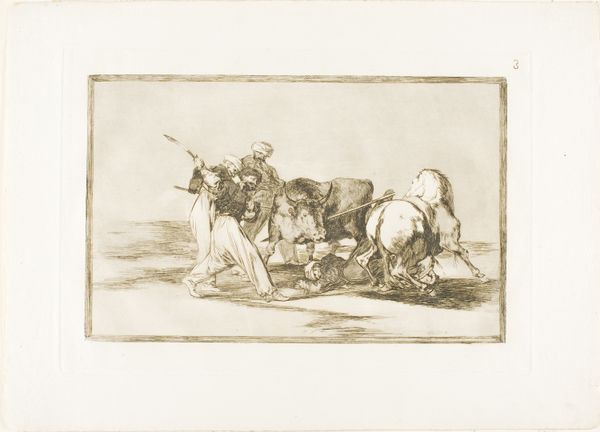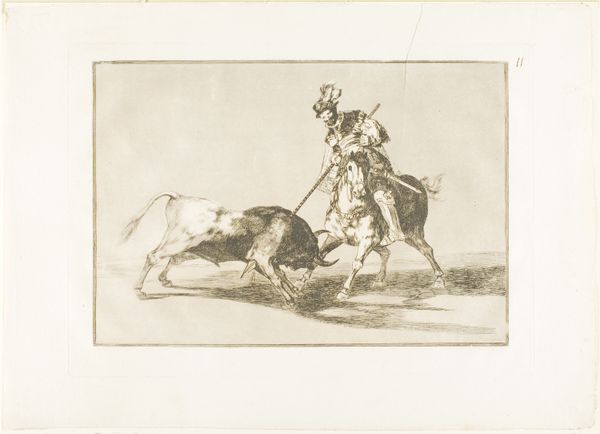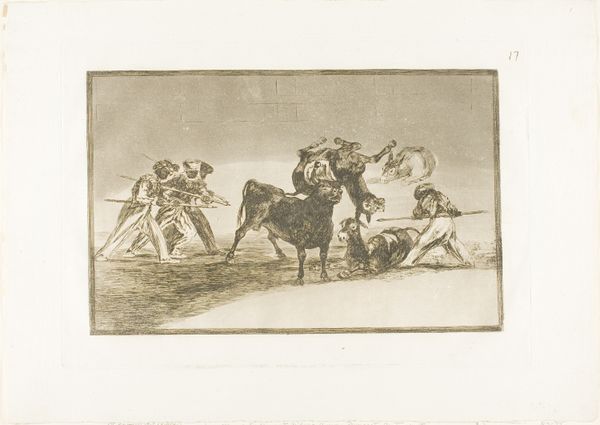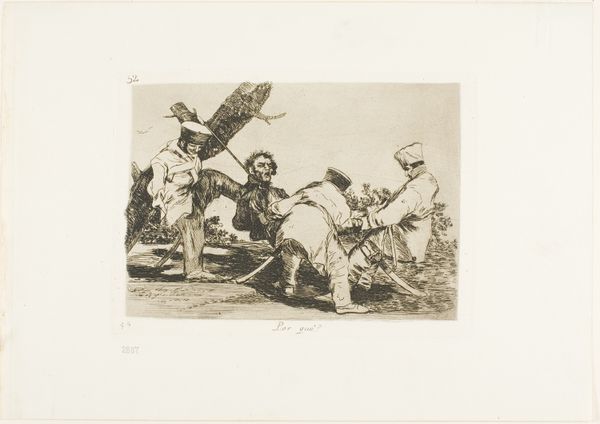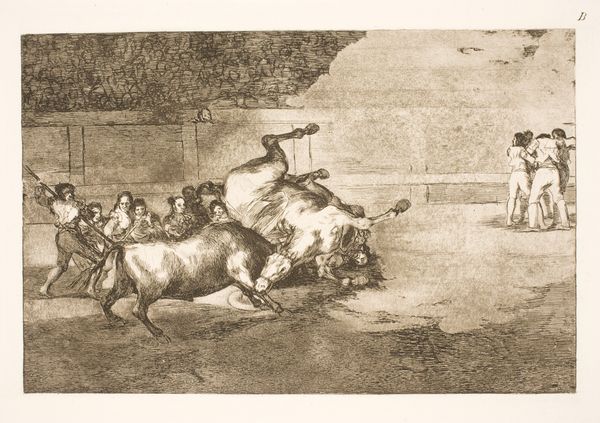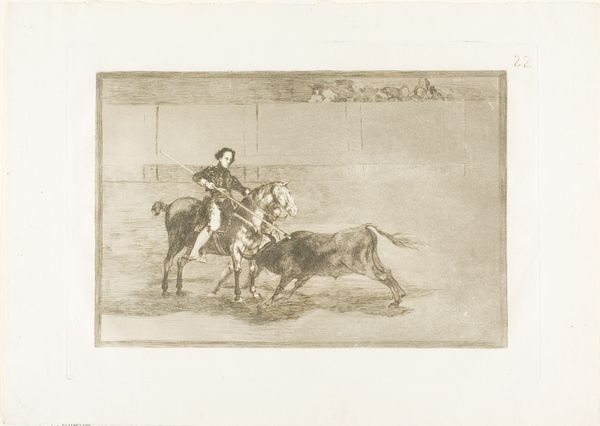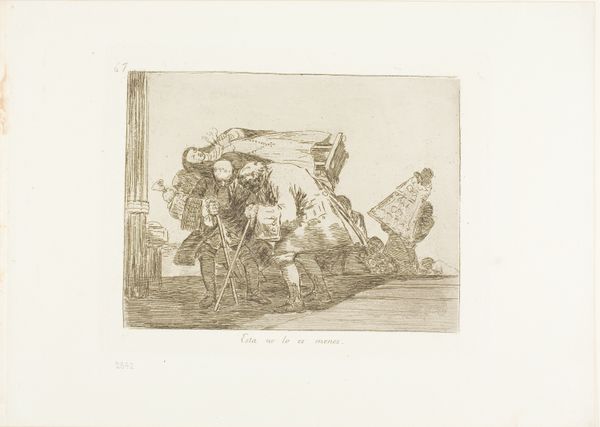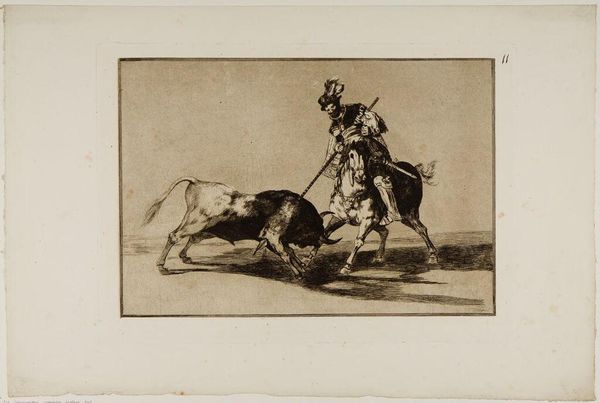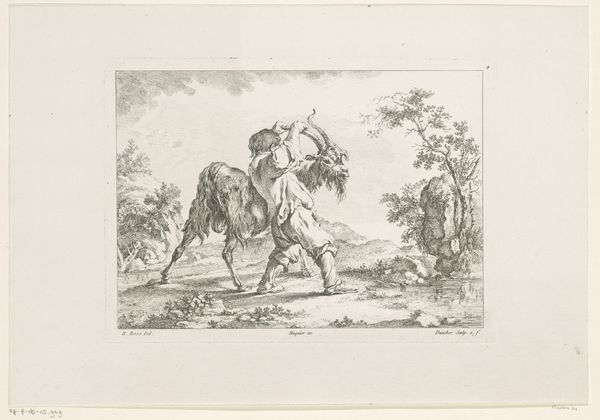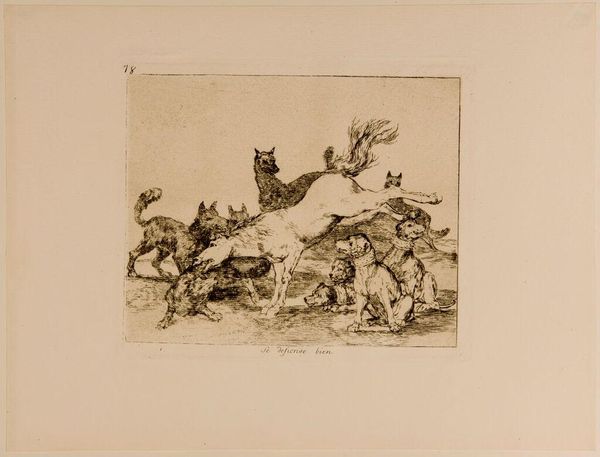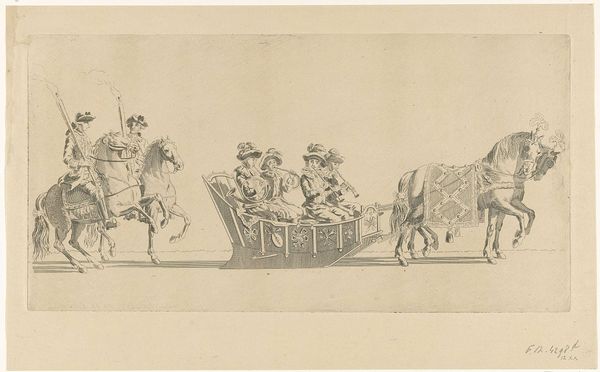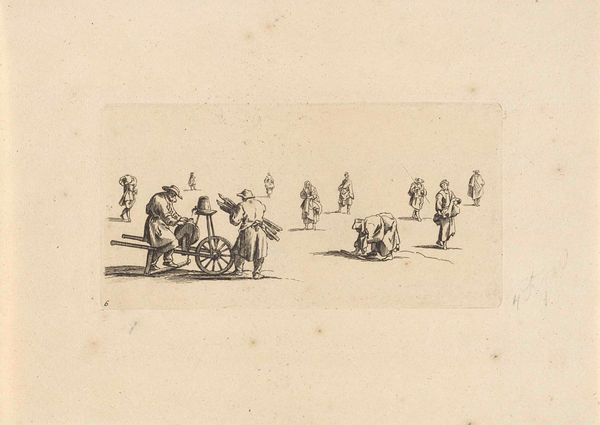
The rabble hamstring the bull with lances, sickles, banderillas and other arms, plate twelve from The Art of Bullfighting Possibly 1814 - 1816
0:00
0:00
drawing, print, etching, paper
#
drawing
#
narrative-art
# print
#
etching
#
paper
#
romanticism
#
history-painting
Dimensions: 210 × 312 mm (image); 250 × 353 mm (plate); 325 × 445 mm (sheet)
Copyright: Public Domain
This print, by Francisco de Goya, captures a moment of intense action and social commentary through the traditional printmaking process of etching. Etching involves coating a metal plate with a waxy, protective layer, then scratching into this layer to expose the metal. When the plate is bathed in acid, the exposed areas are eaten away, creating lines that hold ink. This process allows for incredibly fine detail, seen here in the frenzied energy of the figures and the texture of the bull's coat. The image itself is less about the spectacle of bullfighting and more about the brutal reality, particularly the involvement of the 'rabble' – ordinary people taking part in the violence. Goya's choice of etching emphasizes this rawness, foregoing the slickness of other printmaking methods. The labor-intensive process mirrors the labor of those involved in the bullfight, suggesting the social dimensions of violence. The print challenges any romantic notions associated with the event, highlighting the crude materials and the raw, visceral nature of the encounter. It reminds us that the meaning of art is often found not just in the image, but in the physical act of making and its connection to the world around us.
Comments
No comments
Be the first to comment and join the conversation on the ultimate creative platform.

